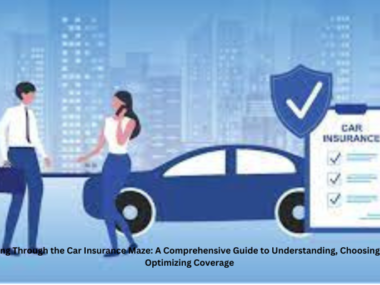Embarking on a road trip, purchasing a new vehicle, or transporting a car from one location to another involves a myriad of considerations, and one crucial aspect is insurance. Drive-away insurance, a specialized type of coverage, comes into play in these scenarios, providing temporary protection for vehicles in transit. In this blog post, we’ll explore what drive-away insurance is, the scenarios in which it is applicable, and the coverage it typically offers.
Defining Drive-Away Insurance:
Drive-away insurance, also known as transit insurance, is a short-term auto insurance policy designed to cover a vehicle during the period when it is being driven or transported from one location to another. This type of insurance is particularly relevant in situations where a vehicle is being moved but has not yet been assigned a permanent insurance policy.
Key Scenarios for Drive-Away Insurance:
- Vehicle Purchases: When you buy a new car, you may need to drive it from the dealership to your home before securing a long-term insurance policy. Drive-away insurance provides coverage during this transitional period.
- Relocations: If you are relocating and need to drive your vehicle to your new residence, drive-away insurance offers a temporary solution until you can obtain a more permanent policy in your new location.
- Vehicle Transports: If you are hiring a professional service to transport your vehicle, some providers may offer drive-away insurance as part of their services. This coverage ensures your vehicle is protected during transit.
- Test Drives: In some cases, dealerships may provide drive-away insurance for test drives. This allows potential buyers to take a vehicle for a test run while ensuring it is adequately insured during the process.
What Does Drive-Away Insurance Cover?
- Liability Coverage: Drive-away insurance typically includes liability coverage, which covers bodily injury and property damage that the driver may cause to others while operating the insured vehicle. This is a fundamental component of any auto insurance policy.
- Comprehensive Coverage: Comprehensive coverage protects the insured vehicle against non-collision events, such as theft, vandalism, natural disasters, or damage caused by falling objects. This coverage is valuable, especially when the vehicle is in transit and exposed to various risks.
- Collision Coverage: Drive-away insurance may also include collision coverage, which pays for damage to the insured vehicle in the event of a collision with another vehicle or object. This is essential protection during transit, where the risk of accidents is higher.
- Uninsured/Underinsured Motorist Coverage: In the unfortunate event of an accident with an uninsured or underinsured driver, this coverage provides financial protection for medical expenses and property damage.
- Temporary Nature: Drive-away insurance is temporary and designed to provide coverage for a short duration. Once the vehicle reaches its destination or a more permanent insurance policy is secured, the drive-away insurance policy ceases to be in effect.
Conclusion:
Drive-away insurance serves as a valuable bridge, providing temporary coverage for vehicles during transitional periods. Whether you’re bringing home a new car, relocating, or transporting a vehicle, having drive-away insurance ensures that you and your investment are protected against unforeseen events. Understanding the coverage provided by drive-away insurance allows you to navigate the open road with confidence, knowing that your journey is safeguarded from the uncertainties of the road






